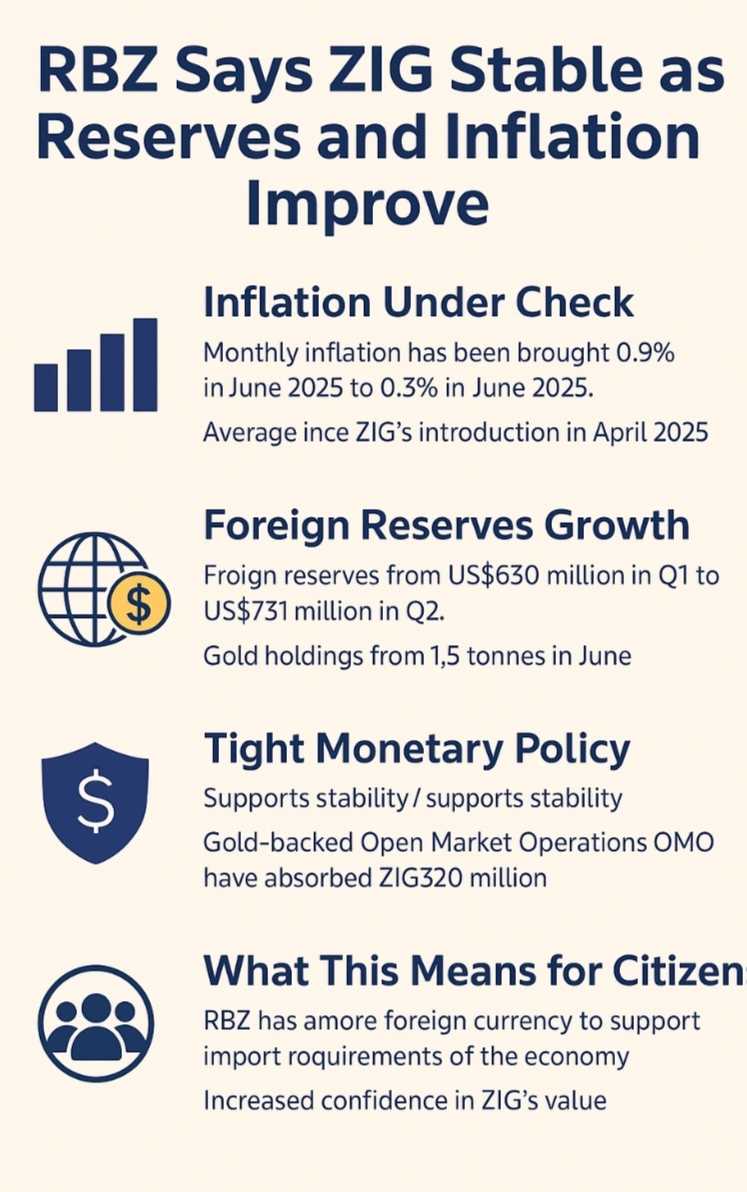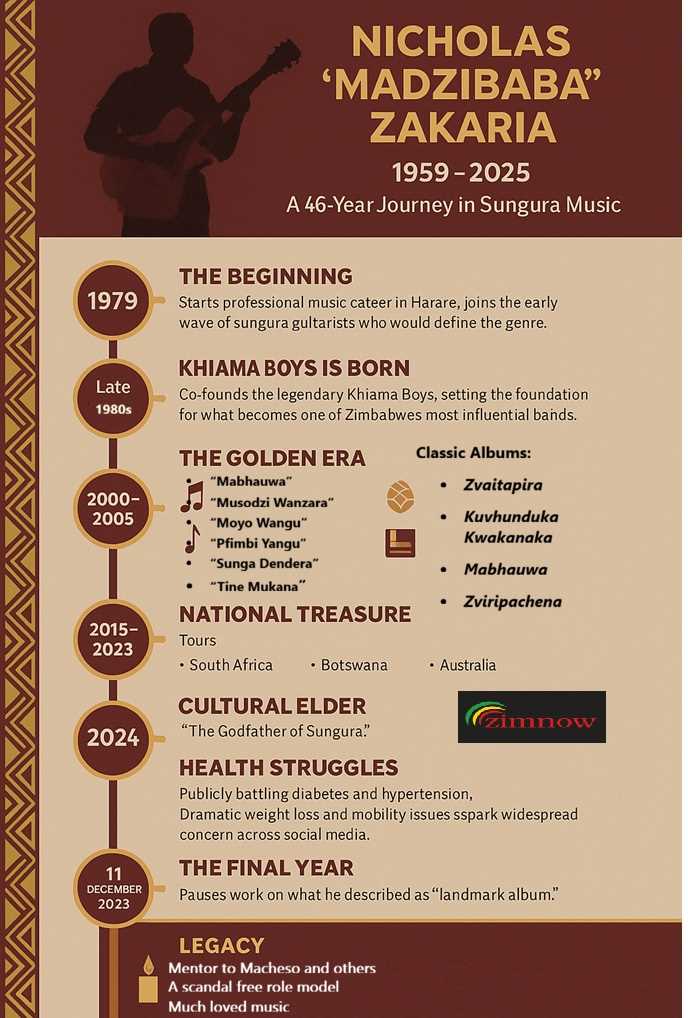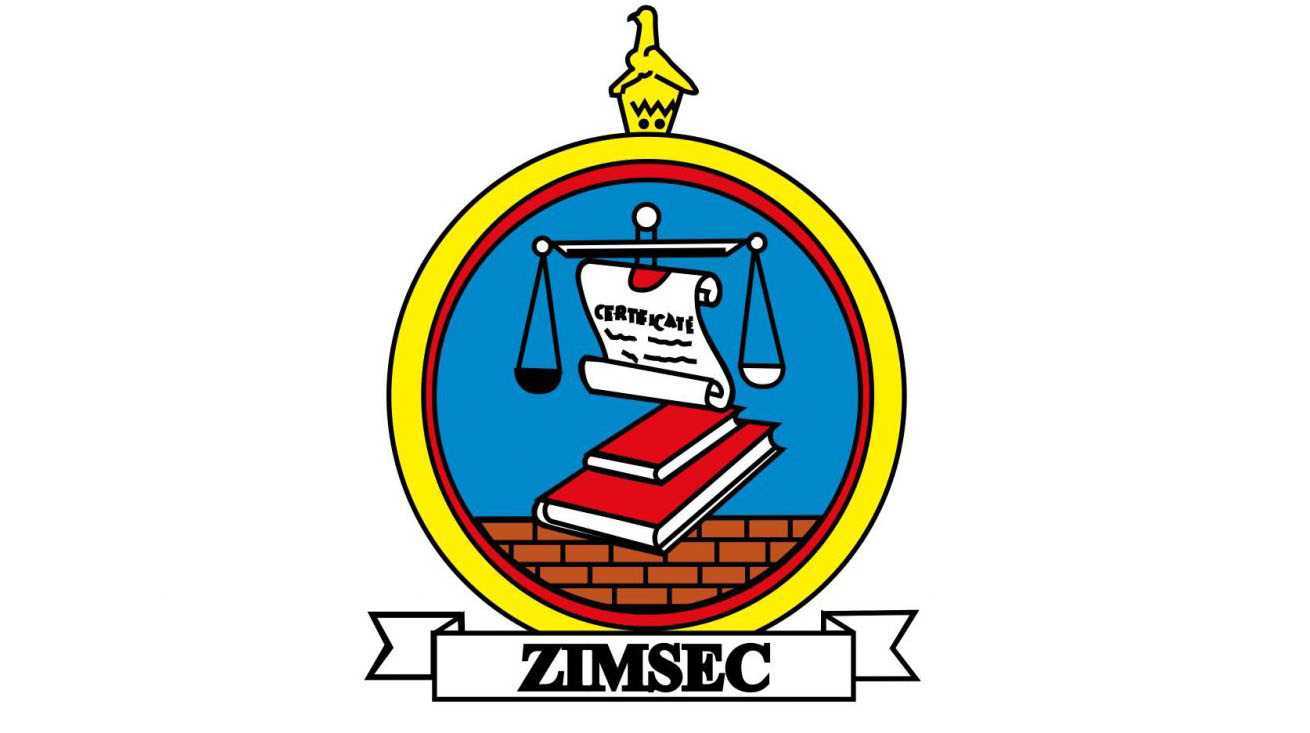
Zim Now Writer
The Reserve Bank of Zimbabwe says the Zimbabwe Gold currency remains stable and backed by strong fundamentals, as it released its Second Quarter Monetary and Financial Highlights for 2025.
The central bank points to contained inflation, robust foreign currency inflows, growing reserves, and tight monetary policies as key drivers of this stability.
In the update, the RBZ reports that monthly inflation has been brought under control, dropping to 0.3% in June from 0.9% in May 2025. Since the introduction of ZIG in April, inflation has averaged 0.5%, which the RBZ says is evidence that “ZIG is holding its value and consumer purchasing power is being protected.”
The central bank is optimistic that inflation will remain on a downward path, forecasting a year-on-year rate of 3.0% by December 2025.
“This means the local currency, ZIG, has sustainably held its own, and the sustenance of this trend will be critical for preservation of consumer purchasing power,” said the RBZ.
The RBZ also highlighted a significant jump in foreign reserves, which rose from US$630 million in the first quarter to US$731 million in Q2.
Gold holdings, which are key to backing ZIG, more than doubled from 1.5 tonnes in April to 3.4 tonnes by June 2025.
“The growth of reserves means that the RBZ has increased capacity to intervene when the need arises to anchor the value of the ZIG,” the central bank stated.
Related Stories
This reserve build-up comes at a time when Zimbabwe recorded US$6 billion in foreign currency receipts from January to May 2025, up from US$4.9 billion during the same period in 2024.
On the policy side, the central bank said its tight monetary stance remains central to anchoring stability. “By maintaining a balance between tight money supply and a managed exchange rate, we are supporting ZIG’s long-term strength,” the bank noted.
The central bank’s gold-backed Open Market Operations have so far absorbed ZIG320 million from the market. The Reserve Bank has also continued to offer Treasury Bills and Foreign Currency Denominated Bonds to support liquidity management.
The RBZ assures the public that the economic gains are tangible at household level.
“RBZ has enough foreign currency to support import requirements of the economy, which strengthens the functioning of the willing buyer willing seller system,” it said.
Additionally, with inflation under control and reserves rising, ZIG’s value is increasingly seen as secure.
“When the value of the ZIG is protected, this increases the confidence of those who trade in it daily—consumers, workers, businesses, and the government,” said the RBZ.
The Reserve Bank said these efforts are already benefiting key productive sectors. Manufacturing and agriculture accounted for 44.82% and 34.73% of disbursements respectively under the Foreign Currency Auction System.


















Leave Comments